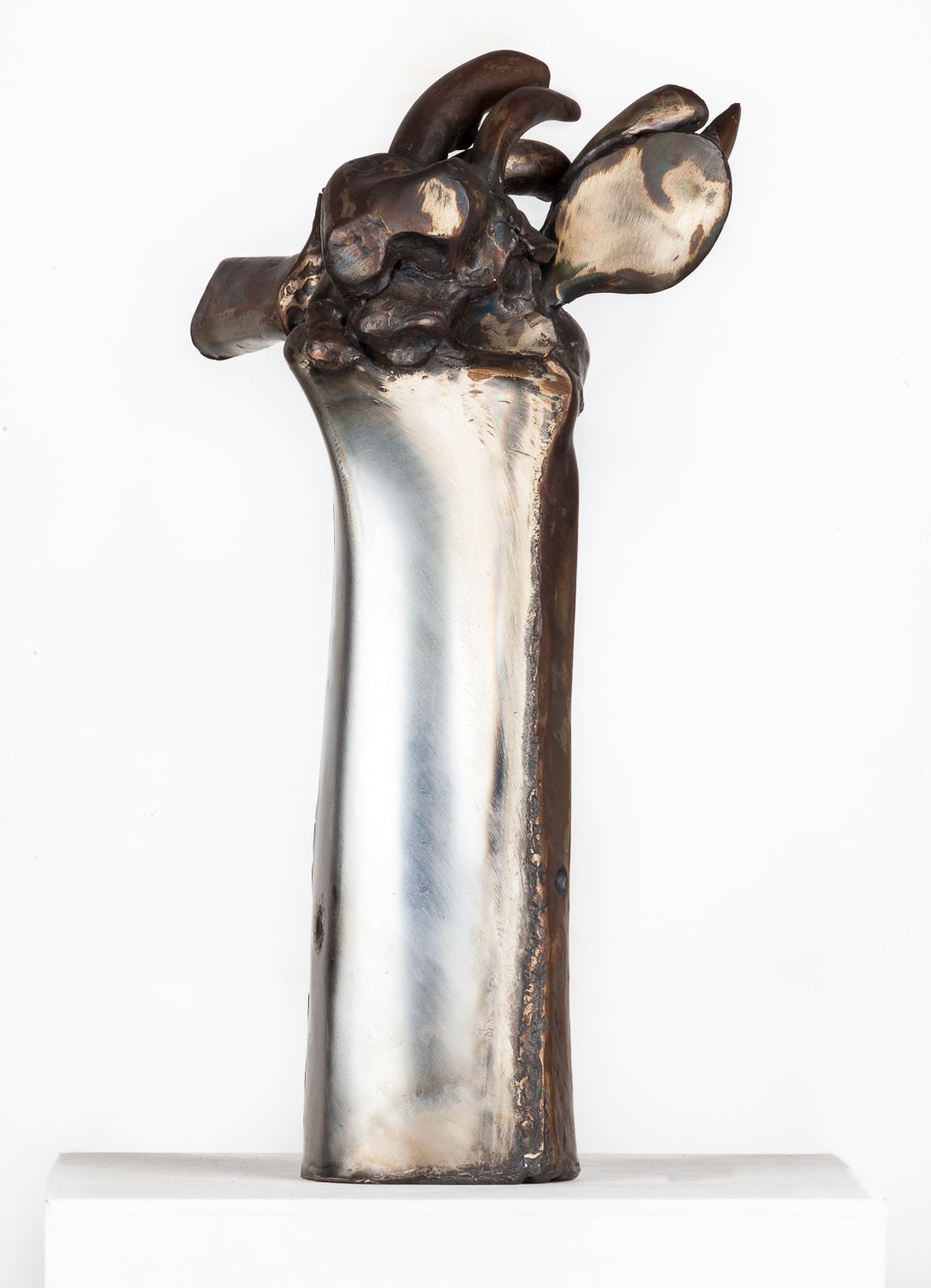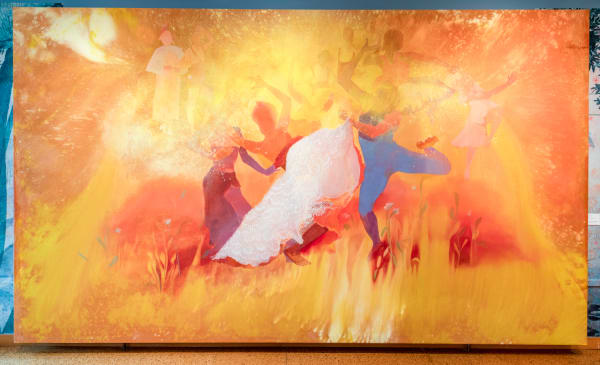274.3 x 487.7 cm
-
Artworks
Richard Hunt USA, b. 1935
Hybrid Form, 1964Welded steel, reclaimed 50s chrome car bumpers, and found steel20 1/2 x 12 1/2 x 9 1/2 in
52.1 x 31.8 x 24.1 cm7418Further images
Hybrid Form is a historic work by Richard Hunt, one of America's most acclaimed and influential sculptors. The piece presents a number of hallmarks of Hunt's style and is an...Hybrid Form is a historic work by Richard Hunt, one of America's most acclaimed and influential sculptors. The piece presents a number of hallmarks of Hunt's style and is an exceptional representative of the particular era in which it was made. Made at the same time as the artist's Minor Monument series, Hybrid Form came about at a crucial moment in the history of sculpture, a transformative moment where American sculptors especially began developing a vernacular specific to the realities of post-war life. The rapidly expanding American industry processed endless volumes of metal into innumerable goods for a booming economy. The midwestern Rust Belt, including Chicago, was a fruitful region for African Americans, as the demand for labor made for abundant opportunities in the industrial sector. When Hunt began producing sculpture after graduating from the Art Institute of Chicago in 1957, the scrapyards of the Midwest were both a quarry and a muse, becoming the substance of his sculptures and inspiring their forms. The discarded metal had organic potential, as its history of marks and some of the natural shapes presented a quality similar to the organic uniqueness of wood or marble. Hunt's particular application of found metal was exceptionally novel, however—he was not presenting perfectly preserved detritus like an assemblage piece, nor was he aggressively purifying the material such that it lost all original character. He walked a tightrope between the two sides, like his peers and friends John Chamberlain and Mel Edwards, so that the history was still visible in the metal, but it was profoundly transformed by his hand. In Hybrid Form, the original scars remain visible on the metal, with streamlined auto ribbing, grommet holes, and rivet heads creating brief nods back to synthetic industry—yet much of the rest of the form is organic and expressive. This important piece came out of the era when Hunt's mastery first started being recognized, an era that led to important exhibitions like his 1971 MoMA retrospective. Years later, the choices feel all the more ahead of their time, as Hunt's ability to recycle material speaks to contemporary artistic concerns.Provenance
Artist studio
Private Collection, Chicago
Kavi Gupta, Chicago
Share- X
- Tumblr
Contact: +1 708-480-2882
General Inquiries: info@kavigupta.com
Media Inquiries: media@kavigupta.com
Client & Sales Inquiries: client@kavigupta.com
Publications: Kavi Gupta Editions
835 W. Washington Blvd. Fl 1-3 Chicago, IL 60607
Hours | Tue–Fri: 11 am–6 pm, Sat: 12 pm–5 pm
835 W. Washington Blvd. Fl 2 Chicago, IL 60607
Hours | Tue–Fri: 11 am–6 pm, Sat: 12 pm–5 pm
2025 Kavi Gupta
This website uses cookies
This site uses cookies to help make it more useful to you. Please contact us to find out more about our Cookie Policy.










